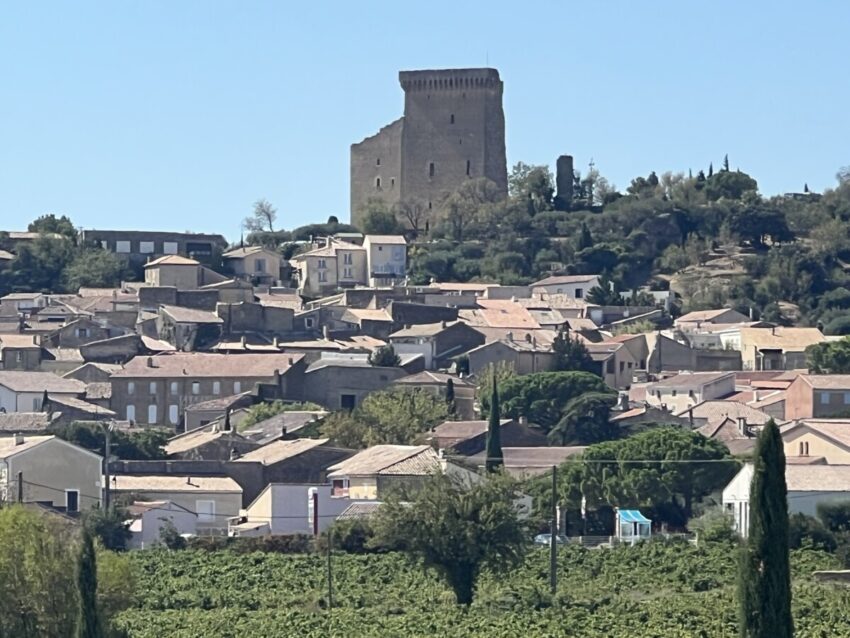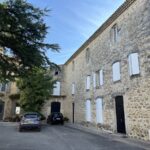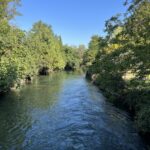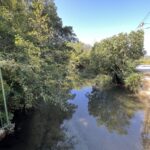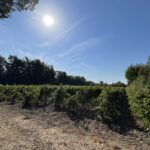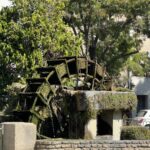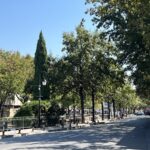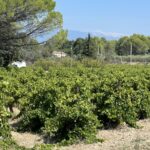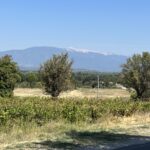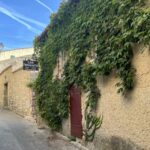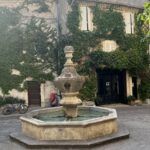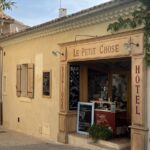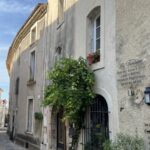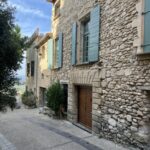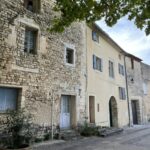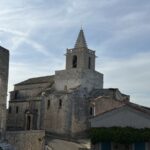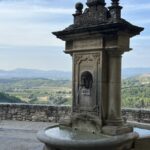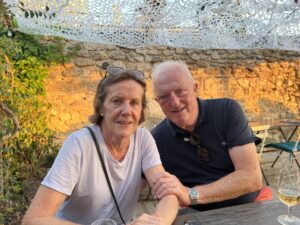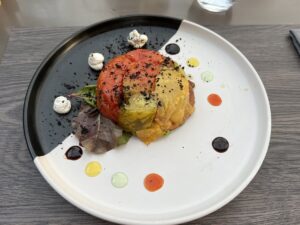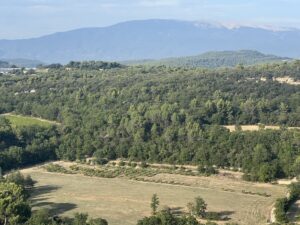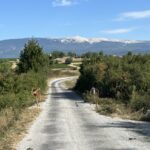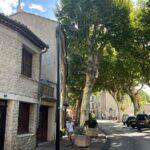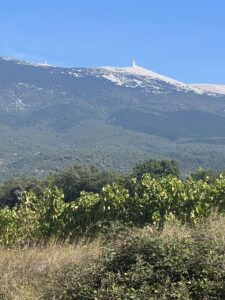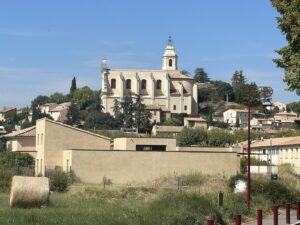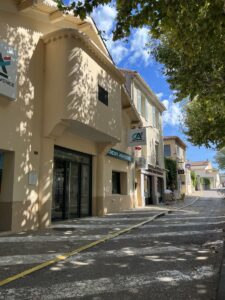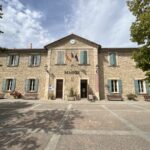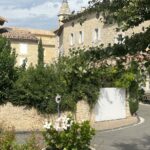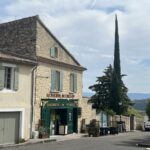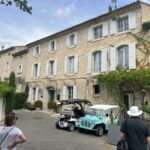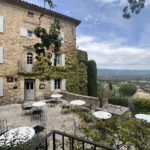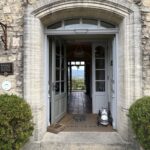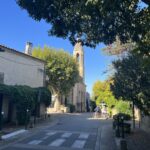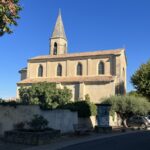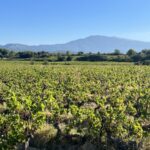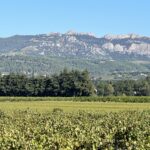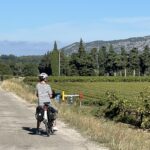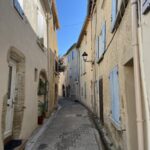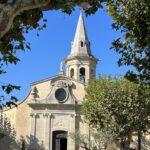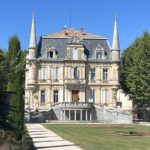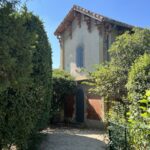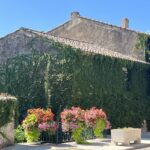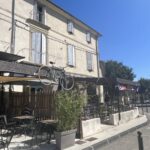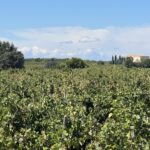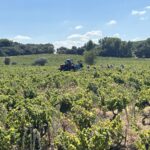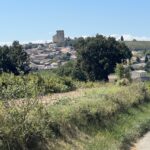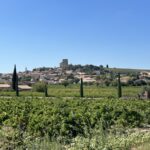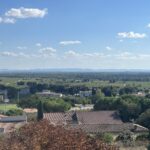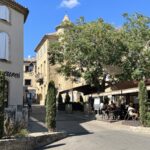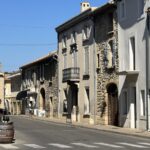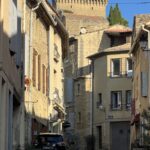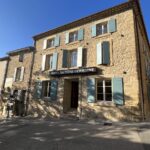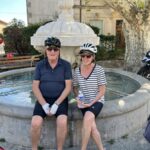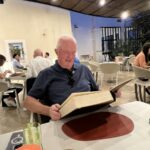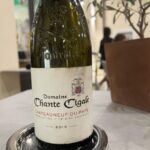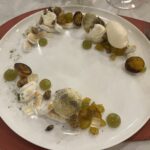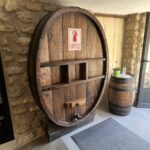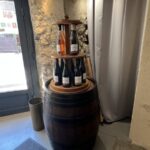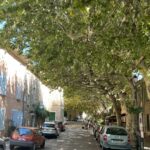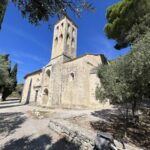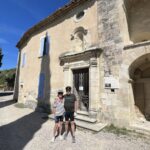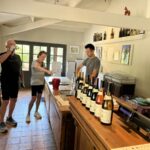The Rhone valley is the second vastest wine-making region in the world, a veritable carpet of wines draping a countryside dotted with picturesque villages.
So departing from Avignon on our wine cycling trip our destination for the first day was Venasque. The scenery is beautiful through typical french villages of houses and shops that are sandstone in colour with beautiful blue shutters on the windows.
Firstly the village of Jonquerettes, which is situated in the Vaucluse department and Provence-Alpes-Côte d’Azur region. Then on to L’isle-sur-la-Sorgue which is one of those places in Provence that one has to see. This “island city” lies at the foot of the Vaucluse plateau in the plains of Comtat Venaissin..
The “bargain hunters”, lovers of beautiful objects, flea markets and art galleries will be delighted, there are indeed nearly 300 antique dealers in this small town!
From here we headed into the heart of the countryside, and made our way up to Venasque, listed as “one of the most beautiful villages in France” to Hotel Les Remparts.
Day 2 and we are cycling from Venasque to Ville-sur-Auzon and then stopping for the night at Bedouin. This ride follows the contours of Mont Ventoux – Provence’s highest peak. Villages are nestled at the foots of the slopes, though none were ever built in the mountain itself. Bédoin is probably best known for its excitement during the Tour de France, making the beginning of the climb to the summit of Mont Ventoux. The main road in town is lined with cafes and bakeries, while the narrow streets lead up to the big church.
We cycled to Crillon le Brave in the afternoon after reaching Bédoin. It is perched well above the valley. Its handful of homes are converted in to what is now one of the most prestigious hotels in France. The terrace overlooks Ventoux.
Then we cycled back to our Hotel, Hotel les Pins, which was on the outskirts of Bédoin and was once a beautiful property but now in need of a little TLC. However it had a nice atmosphere and a reasonable restaurant. Fortunately as we were here for 2 nights I was able to rest for a day to get over covid.
Next day we cycled through St Pierre-de-Vassois, Carpentras and Aubignan, typical little french villages. Aubignan is close to Beaumes-de-Venise and the famous Cotes du Rhone vineyards. Aubignan is, itself, locally famous for the production of wine, and of young vines and vine grafts.
And after cycling through Courtezon and the beautiful vineyards where the grape picking is in full production, we reached the quaint town of Chateauneuf-du-Pape. Chateauneuf-du-Pape is a small village and easy to explore: there is a main square at the bottom of the village and a single road that then leads up the hill to the ruins of the castle.
There is an old fountain in the main square, called the “Grande Fontaine” with four carved nymphs staring into the water. This fountain was the main source of water for the village from the 17th century onwards, and is supplied with water from a spring at several kilometres from there: in certain years when the water dried up the villagers had to use a spring much further down the hill, or even on occasion get water from the Rhone river.
We climbed the hill, passing lots of interesting stone houses. Along the way we saw several small cobbled streets, and various cafes and restaurants.
We stayed in the beautiful Hotel Mere Germaine in Châteauneuf-du-Pape, and had dinner in the restaurant there on our first evening. It was amazing. Below Joe is reading through the wine list, which is listed in a magnificent bound book. The food, wine and service were excellent. The hotel had different buildings in the town and so the next morning we went over the street for breakfast which was also amazing.
Our last day before heading back to Avignon, we cycled through the beautiful vineyards of Châteauneuf-du-Pape and Beaumes-de-Venise. We stopped in Vacqueyras for coffee and a wine tasting, It is a village famous for its wine. The old village is enclosed in a circle of buildings forming a protective wall. The guard tower dates from the 11th and 12th centuries, and has marks of the Knights Templar. the chateau was built in the 14th century and the walled fortifications were constructed during the Wars of Religion. The street around the front of the old village is lined with plane trees.
Vacqueyras, along with Châteauneuf-du-Pape and Gigondas, make up the 3 “grands crus” of the Southern Rhone valley. We had a wine tasting at Beaumes-de-Venise and Joe departed having ordered a few boxes of the muscat and the white wine. Such a good day, and then on to our wine tasting at Chateau la Nerthe in Châteauneuf-du-Pape. (in the next post) Such a great week apart from how bad I felt with covid.

